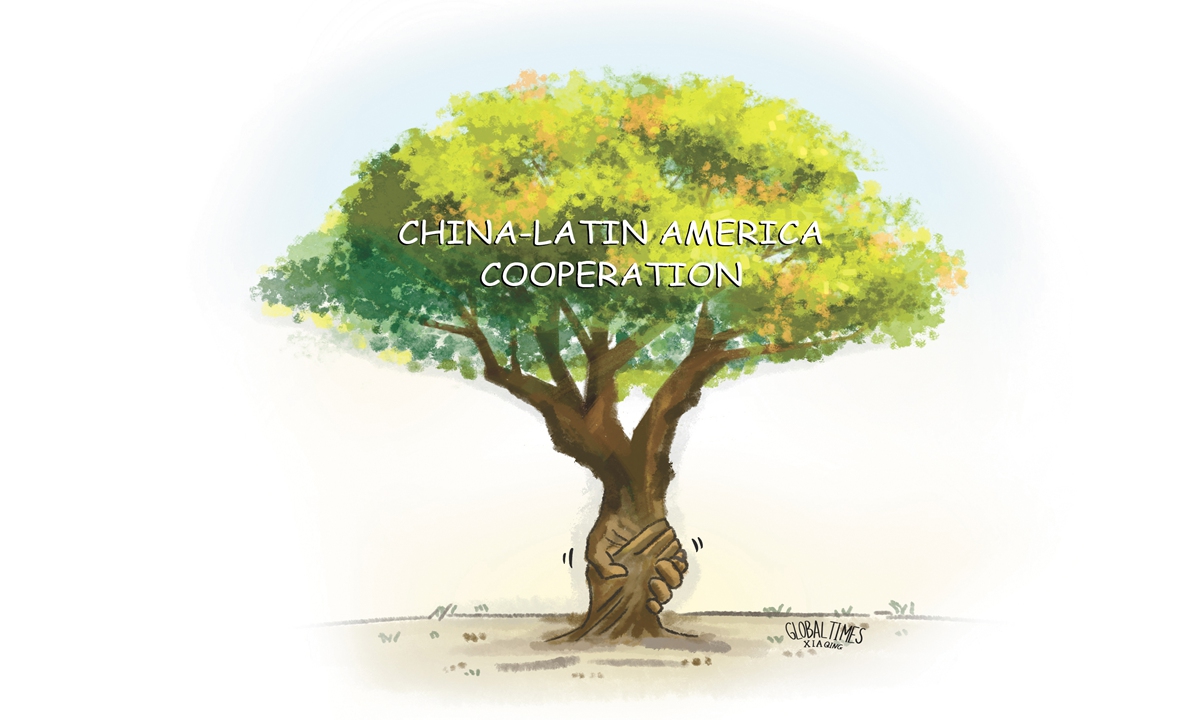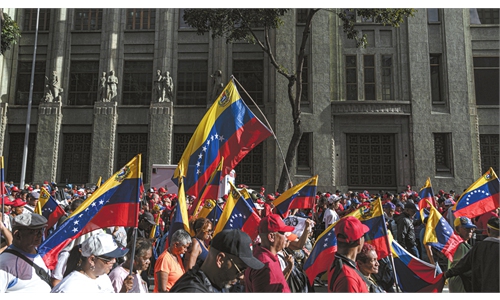
Illustration: Xia Qing/GT
Chinese President Xi Jinping will attend the 31st APEC Economic Leaders' Meeting in Lima and pay a state visit to Peru from November 13 to 17. He will then attend the 19th G20 Summit in Rio de Janeiro and pay a state visit to Brazil from November 17 to 21.
Leaders of the world's most dynamic economies will gather in Latin America to discuss global economic governance and sustainable development for humanity. Latin America is bound to attract the world's attention during this period.
This marks President Xi's sixth visit to the region as the Chinese president.
Ten years ago, on July 17, 2014, Xi attended the China-Latin American and Caribbean (LAC) Countries Leaders' Meeting in Brasilia and delivered a keynote speech, during which Xi for the first time made the proposition of building a China-LAC community with a shared future. This proposal received widespread and positive responses from Latin American leaders and the China-LAC relationship has ushered in a new era characterized by equality, mutual benefit, innovation, openness and more benefits for the people.
Xi, together with the leaders of regional countries, established the China-CELAC (the Community of Latin American and Caribbean States) Forum, providing the first platform for direct dialogue and joint development between the world's largest developing country and the region with the highest concentration of emerging economies. This opened a new phase of bilateral and overall cooperation, where both sides promote and complement each other.
Over the past decade, China has established or restored diplomatic relations with five Central American countries, built a community with a shared future with Cuba, and established various strategic partnerships with over a dozen countries, including Venezuela, Brazil and Mexico. China's three global initiatives have received widespread recognition from Latin American countries. China's participation in regional or sub-regional organizations has increased, whether as a dialogue partner, observer or in any other capacity. On major global issues, both sides have established increasingly close communication and coordination. The China-Latin America "friendship circle" has continuously expanded and deepened, and has become a key force in uniting the Global South.
China has established free trade partnerships with five regional countries. A large number of Latin American products have entered the daily lives of Chinese people. Over the past decade, trade in agricultural products between China and Latin America has doubled. China is currently the region's second-largest trading partner. Meanwhile, Latin America has become the second-largest destination for China's overseas investment.
Quite a few Latin American countries have signed the Memorandum of Understanding with China under the Belt and Road Initiative (BRI). An increasing number of infrastructure projects, cultural and educational facilities, airports, ports, and transportation hubs have been implemented. Various digital infrastructure and clean energy projects are scattered across the region. Many small but practical people-centered projects have helped local communities address urgent needs and improve living conditions. While driving local employment, breaking development bottlenecks and achieving win-win cooperation, the BRI has also brought tangible benefits, happiness and a sense of security to the people of Latin America.
Over the past decade, both sides are forming social groups that focus on each other, covering various fields in the humanities and social sciences. Delegations of legislators, think tanks, media, youth and tourism are traveling back and forth, and cultural symbols such as food, music, historical sites and language are increasingly bridging the two peoples. Civilian exchanges have greatly enhanced mutual understanding and helped foster a closer connection across the Pacific, laying a solid cultural foundation for comprehensive and practical cooperation between China and Latin America.
China-Latin America relations have experienced the fastest growth in history and are now in their best phase. Currently, Latin America is in a critical period of post-pandemic recovery and development. Looking to the future, the unstable factors causing global turbulence are increasing. The historical roots of instability are embedded by the old international political and economic order, combined with unresolved issues during Latin America's own transformation. Enhancing strategic autonomy, advancing the modernization process and building a fair and reasonable global governance system will inevitably become major priorities for Latin American countries, and these goals will resonate with China-Latin America relations.
The China-Latin America relationship is built on the premise of mutual respect, the principle of mutual benefit and win-win cooperation, the characteristic of openness and inclusiveness, and the goal of common development. The development of China-Latin America relations aligns with the global trends and historical currents, meets the shared interests of China and Latin American countries, and will achieve new and greater development in the future. It will inject more certainty into an uncertain world and contribute more to the building of a community with a shared future for mankind.
The author is director of the Latin American and Caribbean Region Law Center at China University of Political Science and Law. opinion@globaltimes.com.cn



